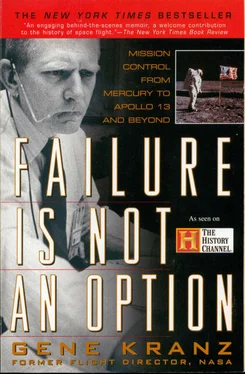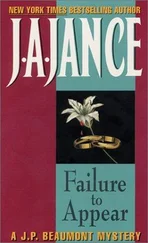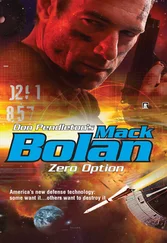Cooper’s post-mission comments said it all. “My analysis of the malfunctions,” he said, “illustrated that the entire Mercury network had developed a concept of teamwork that culminated in an almost perfect example of cooperation between the ground and spacecraft. Almost everyone followed the prestated ground rules exactly, and the radio discipline was excellent.”
Cooper, the loner and rebel against the spaceflight bureaucracy, had pulled off a great mission and a picture-perfect entry. Gordo’s test pilot mentality, coupled with the superb performance of the ground team, was a fitting finale to America’s first manned venture into space.
The final Mercury program party was held at the Old Governor’s Mansion on Galveston Bay on July 27, 1963. It was more formal than most MSC parties and was complete with an invitation worthy of a scrapbook. After a few drinks, Walt Williams began speaking about Mercury. Remembering the first Atlas launch failure and his decision to launch into an overcast sky, he started talking about making risk judgments. Then, in a melancholy tone, he concluded, “You will never remember the many times the launch slipped, but the on-time failures are with you always.” In the years ahead we would have occasion to remember those words.
5. THE MAKING OF A ROCKET MAN
I always wanted to fly. As a boy in Toledo, Ohio, I had my head in the clouds and my heart followed. The cottonwood tree in our backyard was my telescope to the world. On a windy day, I was on the tall mast of a ship plowing through stormy seas, calling out commands to my crew below. On calm days, I was an eagle, lifting and soaring silently, searching for my prey.
The tree was so tall I could see the Willys Overland plant where Jeeps were made. If I stretched out, I could see an occasional airplane to the far north, over Franklin Field.
My grandfather was a German immigrant, Peter Joseph Kranz, a remarkable man who came to America in his early twenties. He founded a savings and loan office in Toledo, was elected city treasurer, and became famous as a trout fisherman. He was wiped out in the Depression. His five sons assumed the responsibility of repaying his creditors.
The oldest son, my father, Leo Peter Kranz, died in 1940 of a bleeding ulcer, misdiagnosed as a heart problem. He was forty-nine; I was seven. One of my greatest losses is that I never got to know him. Of the few recollections I have, the most vivid is of my dad listening to the radio when the Germans invaded Poland. He commented, sadly, that this was the start of a “world war.” I didn’t know what he meant, but in later years I learned he had been a medic in World War I—the so-called war to end all wars.
I’m fond of his picture in uniform, erect, proud, crew-cut, and blond. I closely resemble him and for most of my life I have worn my hair in a crew cut. Like many others of his time, my father had no life insurance, so things got tight for the Kranz family after he died. My mother moved us—me and my two older sisters, Louise and Helen—to West Toledo so that she could raise her kids in a better environment. A staunch Catholic and Republican, her German side was evident when she was faced by a challenge; she never backed down, was stubbornly self-reliant, and expected others, particularly her children, to live up to their beliefs and stick to their guns. She was loving, nurturing—and tough. She turned our home into a boarding house to pay the bills and she ran it like a drill sergeant. Among the boarders who stayed there, a few days at a time, were the servicemen who became my heroes, soon to be fighting the land, sea, and air battles in faraway places—some of whom would give their lives in combat.
I retain vivid memories of World War II because of those young men who lived in our house, flirted with my sisters, and wrote them letters from the various fronts on which they fought. As a paperboy delivering both the morning and evening editions, I would walk past the houses of my customers, hurling the paper and shouting, “Extra! Extra! Read all about it” as the first reports on the Doolittle Raid or Midway came in, right through D-Day, the Battle of the Bulge, and, finally, the capitulation of the Germans and the Japanese. I plotted the major battles on maps I had pinned up on my wall at home.
I also was obsessed with aircraft—just by looking at pictures of fighters and bombers, I could construct models of them the old-fashioned way, gluing them together out of balsa wood and tissue paper. This led me to experiment with powered model aircraft and, later, rockets. I dreamed of the day when I would climb aboard the real thing. I hitch-hiked to Cleveland and Detroit for the air races. Aviation magazines flourished after the war and I hoarded nickels and dimes to buy them. The writings of Willy Ley, Wernher von Braun, and David Anderton inspired me.
My high school thesis was entitled, “The Design and Possibilities of the Interplanetary Rocket.” I proposed a gigantic two-stage rocket shaped like the German V-2. I rendezvoused it in Earth orbit with another stage for propellant resupply. Once the ship reached the Moon, I had to establish a base to manufacture the propellants needed to return home. Writing in 1950, I made this forecast:
An examination of the current technical and industrial development demonstrates the high probability that the Moon will shortly be conquered by man. The base will probably be established in five years and completed in ten.
I scored a 98 on the paper, never imagining that someday I would be a member of the team that would place an American flag on the lunar surface. But, then, my thesis was not your typical high school junior’s idea of light reading.
Work was a way of life in our home. I spent eight years absorbing the lessons and discipline of the Ursuline nuns. I can’t remember not working two jobs, even while cramming and crashing to keep up my grades. I earned a Naval ROTC scholarship to Notre Dame and a congressional appointment to the Naval Academy, then received the crushing news that I had failed the physical. I had shown signs of diabetes. I had high blood sugar because of my diet—heavy on sweets—while working at the A&P grocery store. The condition was temporary, a small consolation. I believed that my world had ended.
My mother, and Sister Mark, my history teacher, would not allow me to surrender. They found a $500 scholarship for the children of deceased veterans of World War I. We sold my father’s stamp albums and with every resource on the table I enrolled at Parks Air College in East St. Louis. The Korean air war had focused my goal to become a fighter pilot. Parks offered training in aeronautical engineering and a no-frills flight program. The dormitories were Army barracks at the edge of crossed cinder runways. Classes were punctuated by the roars of the PT-17 Stearman biplanes, the primary trainer for pilots in World War II, passing overhead. This was the first aircraft I ever flew, feet on the rudder pedals and my hand on the stick. The emotions of that first flight literally brought tears to my eyes. I was no longer swaying in the top of my tree; I was now truly an eagle, climbing, diving, and practicing turns with the wind singing in my ear. At Parks my dream came to life.
I intended to stay for one year, then apply for pilot training. But with the Korean War winding down, I decided to finish college. Parks turned out to be my field of dreams. The college had opened in August of 1927 in a rented hangar at Lambert Field in St. Louis. Oliver Parks was the owner and only flight instructor, and he started with two aircraft. During World War II, 10 percent of America’s pilots had received their primary flight training at one of his schools.
Читать дальше












